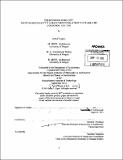| dc.contributor.advisor | David H. Friedman. | en_US |
| dc.contributor.author | Lopez, John F., 1971- | en_US |
| dc.contributor.other | Massachusetts Institute of Technology. Department of Architecture. | en_US |
| dc.coverage.spatial | n-mx--- | en_US |
| dc.date.accessioned | 2014-01-23T18:39:02Z | |
| dc.date.available | 2014-01-23T18:39:02Z | |
| dc.date.issued | 2013 | en_US |
| dc.identifier.uri | http://hdl.handle.net/1721.1/84364 | |
| dc.description | Thesis (Ph. D. in Architecture: History and Theory of Art)--Massachusetts Institute of Technology, Dept. of Architecture, September 2013. | en_US |
| dc.description | Cataloged from PDF version of thesis. "September 2014." | en_US |
| dc.description | Includes bibliographical references (pages 253-269). | en_US |
| dc.description.abstract | Mexico City is a special case in urban history because the measures taken by the Aztec and Spanish to avoid inundations have fundamentally changed the city's character. In 1521, it was an island-city; in 1629, it lay near the banks of Lake Mexico; and by 1700, it rested on a reclaimed mainland. This transformation is significant, speaking not only to the flood control approaches of the Aztec and Spanish, but equally important, to how these methods profoundly altered this city's urban condition. Like the Aztec, the Spanish sought to control the six lakes surrounding the city to prevent inundations, yet their approach was quite different. The Aztec relied on containment and regulation, while the Spanish undertook drainage, referred to as the desagüe. Despite the scholarly attention devoted to pre-Columbian and colonial hydraulics, no research examines the relationship between the city's lacustrine environment and its urban transformation. "The Hydrographic City" addresses three key questions: (1) What were the respective flood control approaches of the Aztec and Spanish? (2) How did these approaches shape two different cities? (3) How did the Aztec and the Spanish differ in how they conceived the city's aquatic condition, and what were the epistemological roots of their strategies for coming to terms with it? | en_US |
| dc.description.statementofresponsibility | by John F. López. | en_US |
| dc.format.extent | 269 pages | en_US |
| dc.language.iso | eng | en_US |
| dc.publisher | Massachusetts Institute of Technology | en_US |
| dc.rights | M.I.T. theses are protected by
copyright. They may be viewed from this source for any purpose, but
reproduction or distribution in any format is prohibited without written
permission. See provided URL for inquiries about permission. | en_US |
| dc.rights.uri | http://dspace.mit.edu/handle/1721.1/7582 | en_US |
| dc.subject | Architecture. | en_US |
| dc.title | The hydrographic city : mapping Mexico City's urban form in relation to its aquatic condition, 1521-1700 | en_US |
| dc.title.alternative | Mapping Mexico City's urban form in relation to its aquatic condition, 1521-1700 | en_US |
| dc.type | Thesis | en_US |
| dc.description.degree | Ph.D.in Architecture: History and Theory of Art | en_US |
| dc.contributor.department | Massachusetts Institute of Technology. Department of Architecture | |
| dc.identifier.oclc | 867541244 | en_US |
